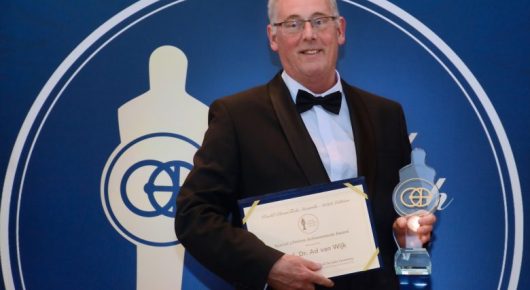Hydrogen tractor: a first in the Netherlands
30 September 2020Green hydrogen will play a key role in the transition to a sustainable energy system when it comes to mobility, particularly for heavy transport. This will require among other things new technologies – now and into the future. And the technological developments are already in full swing. Such a development is the dual fuel hydrogen tractor. We provide a glimpse of the developments here, and set the first hydrogen tractor in the Netherlands in context.
We live in a period that is increasingly being referred to as the ‘Anthropocene’, in which humans exert a dominant impact on the entire planet. There is a growing realisation that we are getting close to – or have already reached – the limits of what the Earth can bear. To turn things around, radical changes need to be made in numerous areas, from technology to spatial planning to behaviour. We are therefore right to talk about a transition.
Back to green hydrogen for mobility. The greatest added value lies in its application for heavy transport and power equipment. Here, we see developments along three tracks.
Hydrogen electric vehicles have an on-board fuel cell, which uses hydrogen to generate electricity that powers an electric motor. The only emission from this kind of fuel cell is pure water; otherwise, the system is completely emission-free. The availability of such vehicles for heavy transport is still very limited, but various manufacturers, including Hyzon en Holthausen, have announced plans to enter the market in the coming years. All in all, these vehicles perfectly complement battery electric vehicles, which are more suited for light transport.
Internal combustion engines powered entirely by hydrogen are undergoing rapid development. They are expected to come onto the market in the years ahead. This technology also involves a 100% reduction in CO2 emissions. Nitrogen oxides, which are inherent to internal combustion engines, are emitted however, although at optimised levels.
Dual-fuel hydrogen vehicles are expected to be the link in the transition. In this case, hydrogen is blended with diesel in a diesel engine, accounting for up to about 70-80% of the energy input. The CO2 emissions are proportionately reduced, but nitrogen oxides are still emitted, even if below conventional levels. The vehicles can still be fully run on diesel, which, from an operational reliability perspective is key. After all, green hydrogen is not widely available yet. That too is transition!
Dual fuel hydrogen tractor
The Dual Power tractor has been developed in part by Jos Scholman Contractors BV, one of the Hysolar initiators. Director Robert Scholman is proud of the tractor jointly developed with New Holland: ‘We have to take steps to achieve our sustainability objectives. In addition to our 11 hydrogen cars, we now have – as a first in the Netherlands – four operational Dual Power hydrogen tractors. And we are taking this further: one of the next steps involves setting up a hydrogen refuelling station at our site in Nieuwegein.’
This is how we are working on the energy transition, both in implementation and through research and innovation.

